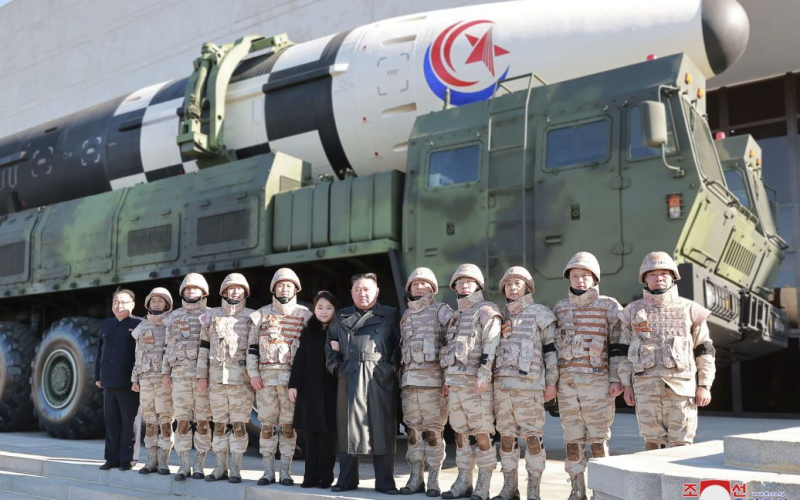
The new missile is capable of flying about 4,000 km, which extends beyond the Korean Peninsula.
North Korea has successfully ground-tested new solid-fuel engines for a new type of medium-range intercontinental ballistic missile (ICBM).
This was reported by the DPRK state news agency KCNA.
The DPRK tested newly developed high-thrust solid propellant engines on November 11 and 14 to evaluate their technical performance.
The news agency claims that the first ground-based jet tests of the first and second stage engines were very successful. They claim that the tests “once again confirmed the reliability and stability of the created North Korean technologies for the design and production of high-thrust solid propellant engines.”
North Korea expects that these tests will speed up the development of a new type of ICBM at a time when the country is “facing a serious and unstable security situation and brutal military collusion between enemies.”
Advantages and threats of North Korean solid fuel missiles
In previous versions of medium-range ICBMs, North Korea used liquid fuel. Therefore, the missiles had significantly worse performance. The launch of rockets using solid fuel is faster, and the moment of launch itself is more difficult to detect when compared with liquid fuel ones.
The new North Korean ICBM is believed to be capable of flying to a distance of about 4,000 km. This extends beyond the Korean Peninsula, so the missile could hit US military bases on the island of Guam.
As suggested in South Korea, after the successful testing of the engines of the first and second stages, the DPRK may soon test launch a solid-fuel ICBM. For example, this could happen during the celebration of Rocket Industry Day on November 18.
Seoul also suspects that after two previous unsuccessful launches of a military spy satellite in May and August, Pyongyang is preparing a third attempt with technological help from Russia. This will allow North Korea to test technologies for launching long-range ICBMs, which are identical to those used to launch satellites into space.
By the way, in October, North Korea accused the United States of increasing the nuclear threat and criticized it for the Pentagon report, which called Pyongyang a “constant” threat due to weapons of mass destruction. North Korea also threatened to respond to any American aggression or provocation with its “strongest and most sustained response strategy.”
Read also:
Related topics:
More news

